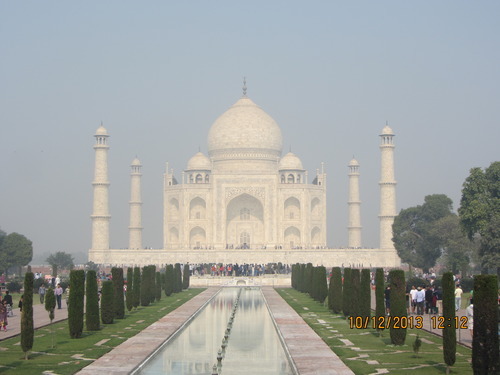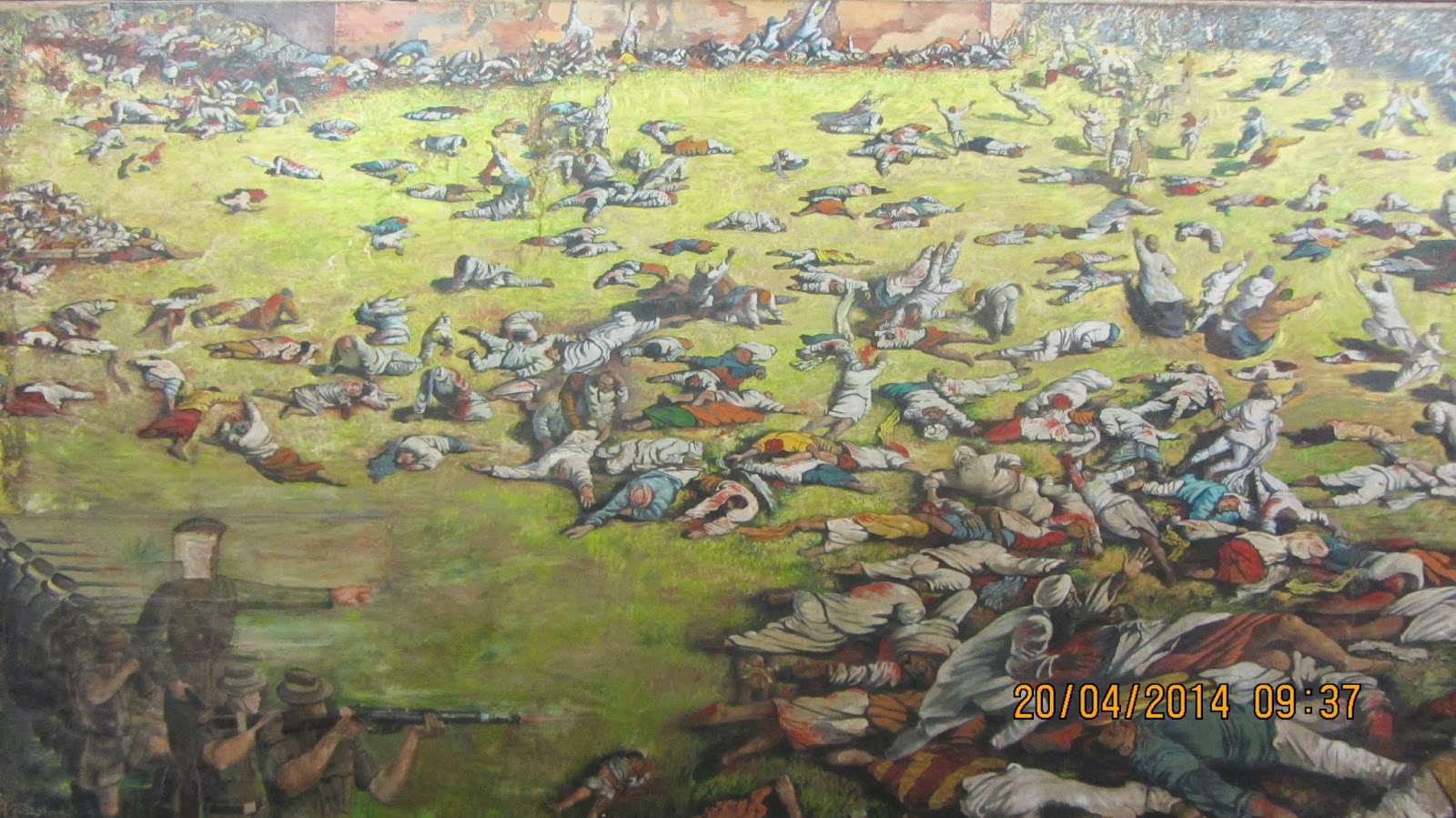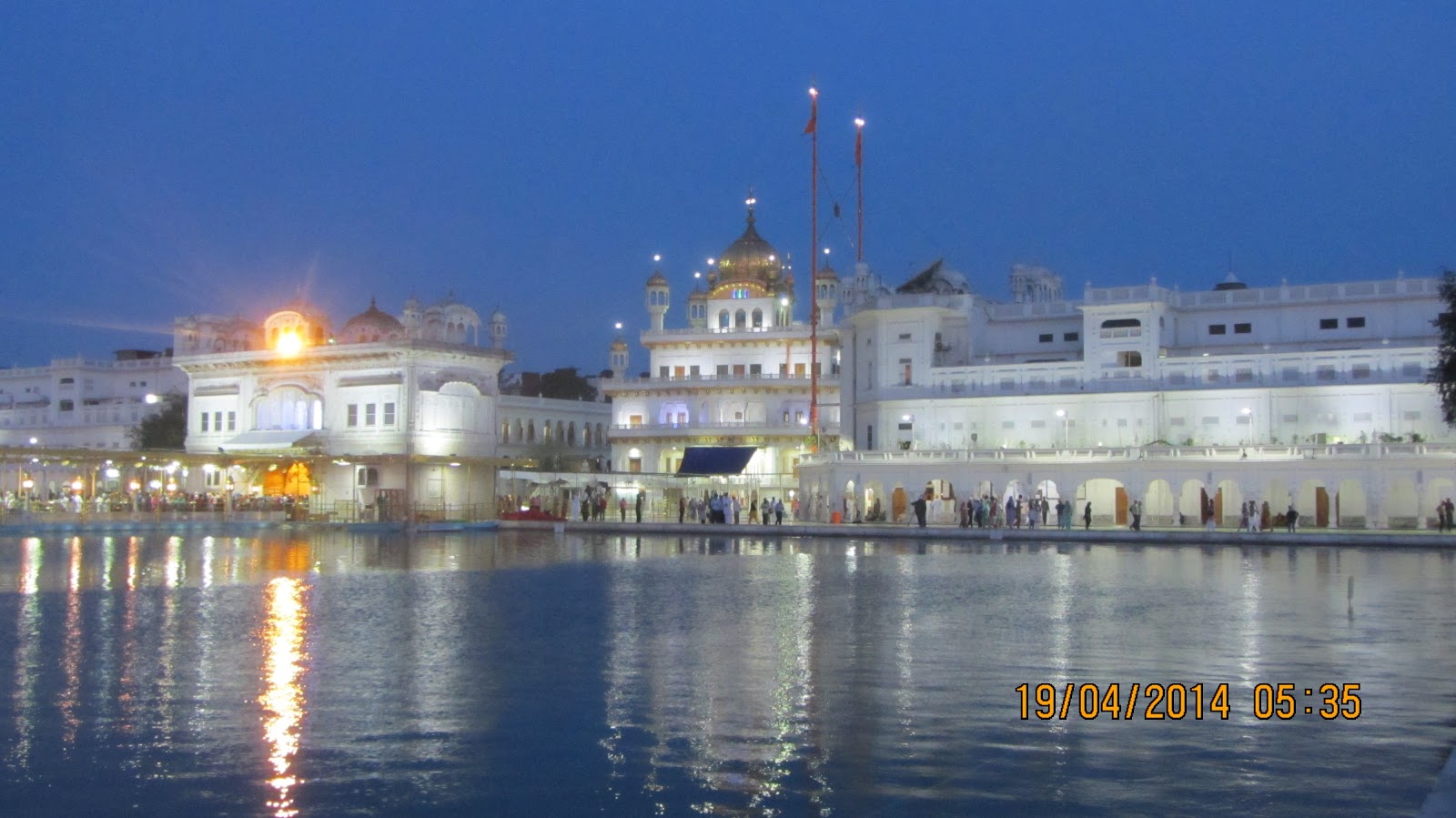Continuing from Part 1 and Part 2.................
OK, this is going to be a super short post by my standards. First, let's get the food out of the way. For dinner, we went to a place called Makhan Fish. It is a famous and popular place. As many such joints, it had grown in size with its popularity. But it has grown in a characteristically desi way. It now has two floors. The upper floor is a normal family air conditioned restaurant. The ground floor is the interesting part. It is a big room with tables laid out. People (actually, exclusively men) walk in with bottles of liquor, mostly whiskey, and nothing less than 100 Pipers. We even saw many Chivas Regals. They would order fish, a few would order chicken or some other snacks, and start hooching. Many of them would come with their family, send the ladies and kids to the first floor, and have a boys only drinking session on the ground floor. The room also had a huge TV showing cricket. As far as the fish went, it was fantastic. Our dinner consisted of fish only.
OK, this is going to be a super short post by my standards. First, let's get the food out of the way. For dinner, we went to a place called Makhan Fish. It is a famous and popular place. As many such joints, it had grown in size with its popularity. But it has grown in a characteristically desi way. It now has two floors. The upper floor is a normal family air conditioned restaurant. The ground floor is the interesting part. It is a big room with tables laid out. People (actually, exclusively men) walk in with bottles of liquor, mostly whiskey, and nothing less than 100 Pipers. We even saw many Chivas Regals. They would order fish, a few would order chicken or some other snacks, and start hooching. Many of them would come with their family, send the ladies and kids to the first floor, and have a boys only drinking session on the ground floor. The room also had a huge TV showing cricket. As far as the fish went, it was fantastic. Our dinner consisted of fish only.
Jallianwala Bagh
The next day, we decided to visit Jallianwala bagh before heading back to Delhi. The Jallianwala bagh has had a special significance in our country's freedom struggle. We all know the story, and everyone of us knows the name of the man who butchered thousands of innocents, Brigadier-General Reginald Dyer. So I went there with a solemn sense of history weighing down on me. The entrance to the monument is located in the center of the city, in a bustling marketplace. The entrance is through a narrow walled passage, which is the way it was originally. This gives the place a further sense of claustrophobia.
And then we walk into a......garden?! It was such an anti-climax. Why do I say so.....firstly one expects a large field, not a neatly manicured garden which is divided into blocks of greenery with walking paths,etc.
Secondly, as we are walking down the path, we see a small marker saying that the people were fired at from that spot....totally innocuous and seems out of place. And one single marker cannot show the position of the soldiers because there were 90 soldiers, 65 with rifles, firing at the crowd.
Thirdly, there is a monument in the middle of the park remembering the dead, but it does not seem to have any relevance or meaning..... it is just an art installation. Reminds me of a lot of things (Obelix's Menhir for example.....what were you thinking?), but certainly not martyrs. If any of you, with a more refined sense of appreciation of the arts sees it's significance, please enlighten me through the comments. And I am not being sarcastic about it, I really would like to know.
Many people died when they jumped into a solitary well located in the compound. Over 120 bodies were fished out of it later. This well now looks like a hut. You don't enter a hut to see the well - the well itself has been disguised into a strange..... Hut-Well.
In between the park, there are a few portions of the original wall with bullet marks on them. In the making of the park, the level of the ground has gone up significantly. So some portion of the wall are below the ground level.
Though everyone may not agree, my view is that we do not know how to create a compelling national monument. This is a watershed event in our history. It still has the power to move us. The monument here should be designed in such a way that we should be able to visualise what happened here......We should be able to feel the horror of the situation. But instead, you feel as though you have come for a stroll in the park. The layout is such that you are left wondering what the original place looked like and where the crowds were assembled. A monument of such national importance should inspire pride and respect for the valour of the Freedom Fighters, a sense of patriotism. But alas!
The place is further trivialised by whimsical creations of the horticultural division - Plant Soldiers! With rifles / Rocket launchers?
There is also a small museum with painting, photographs, newpaper clippings and first hand accounts. Though there is a lot of interesting information, it is a bit of an effort to read everything. The first hand account of a woman whose husband bled to death, and how she had to spend the night next to him with, all the dead and dying, was heart-wrenching. I also came to know about Shaheed Udham Singh, who planned revenge and finally killed O'Dwyer in London in 1940. O'Dwyer, not Dyer. I had a vague idea that the 'Butcher of Amritsar' was killed by an Indian. But actually, Dyer died due to a stroke in 1927. O'Dwyer was the Lieutenant Governor of Punjab during the massacre and he had praised Dyer for his actions. Udham Singh killed him as he held him responsible. He was hanged in London.
Finally, whatever be the merits or demerits of the present construction, it is a place every Indian should visit. The museum gives us a glimpse of what life was as a second class citizen.
I will end here as the supposedly super-short post is not so short anymore. Suffice to say, we had an uneventful drive back to Delhi......except for being stopped by cops, with a video camera, to check if we were transporting wads of black money. After all, it was election time.
Hope you enjoyed the post.
Hope you enjoyed the post.














































































